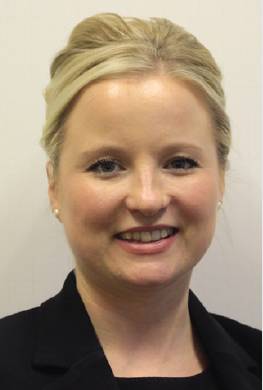Continuing Professional Development
CPD requirements:
how do they work on a practical level?
Louise Turner writes a practical guide to meeting your CPD requirements, including an example scenario and subsequent submissions, with tips on achieving course-free CPD.
As a Fellow and an Advocate Chartered Legal Executive, when in practice I was required to grapple with the changes to the CPD requirements. Change is not always easy, and when the changes came into play I thought: ‘I shall read up about that’ . This train of thought continued for a few months until, in a mild state of panic, I really did read up about how the changes would affect the way I achieved and recorded my CPD outcomes.
My interpretation of the changes was that, in actual fact, it would be easier to achieve my CPD as the new framework would enable me to tailor my training to my discipline of criminal defence practice. No longer would I be attending CPD courses where much of the content was not applicable to my area of work in that tick-box fashion of accumulating ‘x’ number of CPD hours, as we were now asked to achieve outcomes.

I set about planning my CPD for the year 2014/2015, which was my last year in practice before joining CILEx. I was to achieve nine entries: three to be planned early in the year, with a minimum of five planned in total, including the professionalism requirement.
I was appearing before the magistrates’ court on a daily basis, and had been finding the youth court work more challenging; so, I decided that this should be my CPD focus. This time, I did not look at suitable courses to attend, but considered my own caseload to ensure that I would be exposed to a variety of youth court cases which could widen my knowledge.
This example of a real-life scenario shows how unplanned learning can be used to satisfy your CPD requirements and can also lead to additional entries.
I was called out to the police station to represent two 15-year-old girls, both arrested on suspicion of shoplifting. However, on being searched, one client produced a knife from her handbag. I was aware that the sentencing guidelines for youth knife crime had been considered recently by the Court of Appeal, and therefore I needed to research recent case-law .
The research conducted in connection with this case was recorded on my CPD record as an unplanned activity. I printed o› the case-law I researched, dated the document and ÿled it within my CPD record.
When re›ecting on what I had learnt in dealing with this case, I found I had achieved two CPD outcomes:
- I had learnt about the recent case-law ; and
- I had learnt about the sentencing framework of the youth court.
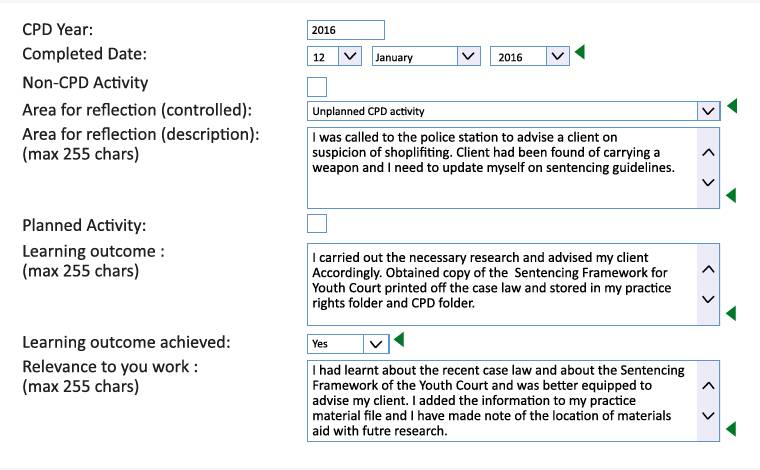
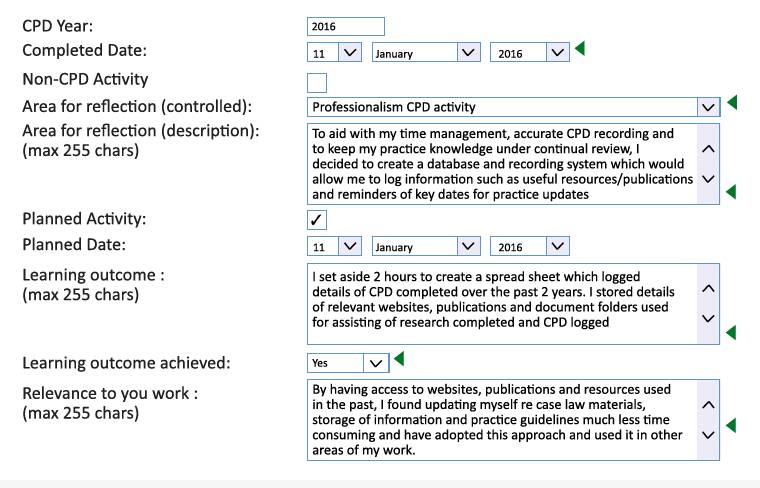
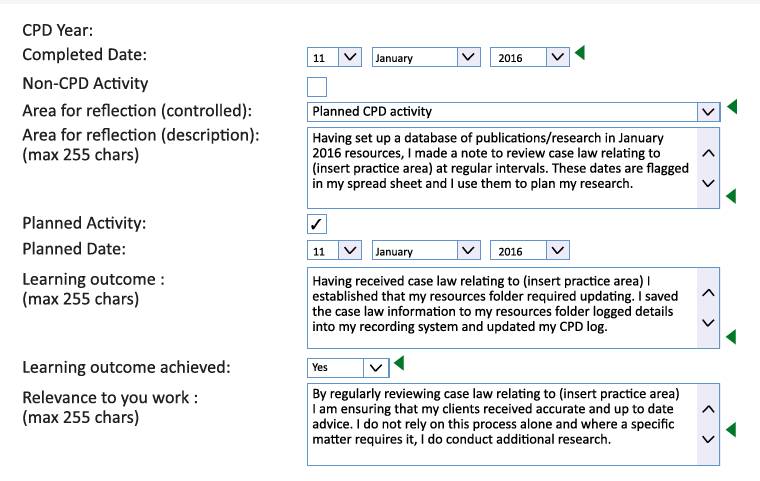
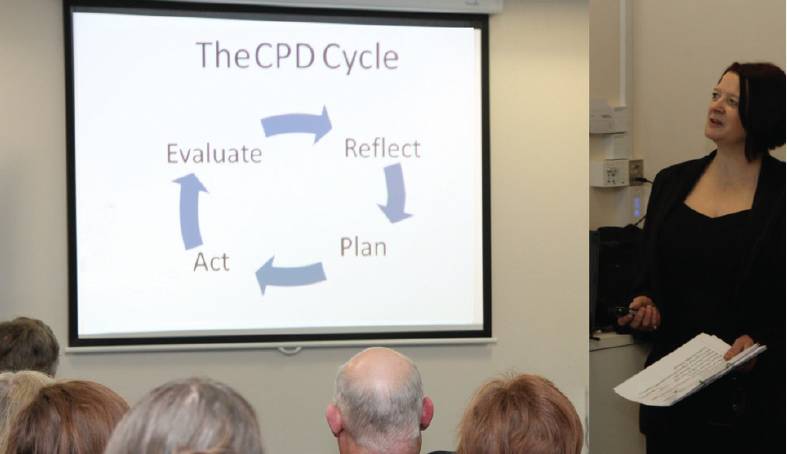
You can achieve CPD outcomes in many ways, and I would encourage our members to think outside the box on this one!
- Take advantage of your contacts: ask local chambers you instruct to come and share specialist knowledge with you by inviting them to give CPD talks on topical legal issues. Don’t feel embarrassed to ask: such requests provide chambers with an excellent platform on which to form lasting working relationships with law firms.
- To increase client - business awareness, find opportunities to learn more about your clients’ business to enhance your legal information and professionalism. For example, if you are a conveyancing practitioner, you could ask large property developers to share their business knowledge with you and vice versa; through training, you could help them to understand the conveyancing process to make for a better working relationship.
- Share your own specialist knowledge with work colleagues, and encourage them to share their knowledge with you, through hosting in-house training sessions. These can be held on a very informal basis, for example, a working lunch or breakfast event. You can share information on a one-to-one basis also through work shadowing colleagues in different departments or disciplines in which, perhaps, you would like to gain experience and understanding.
- Your local branch will be a good source of advice, guidance and best practice on CPD. Details of your local branch can be found here. See also ‘CILEx branches: facing the future, together’ , (2016) February CILExJ p40.
